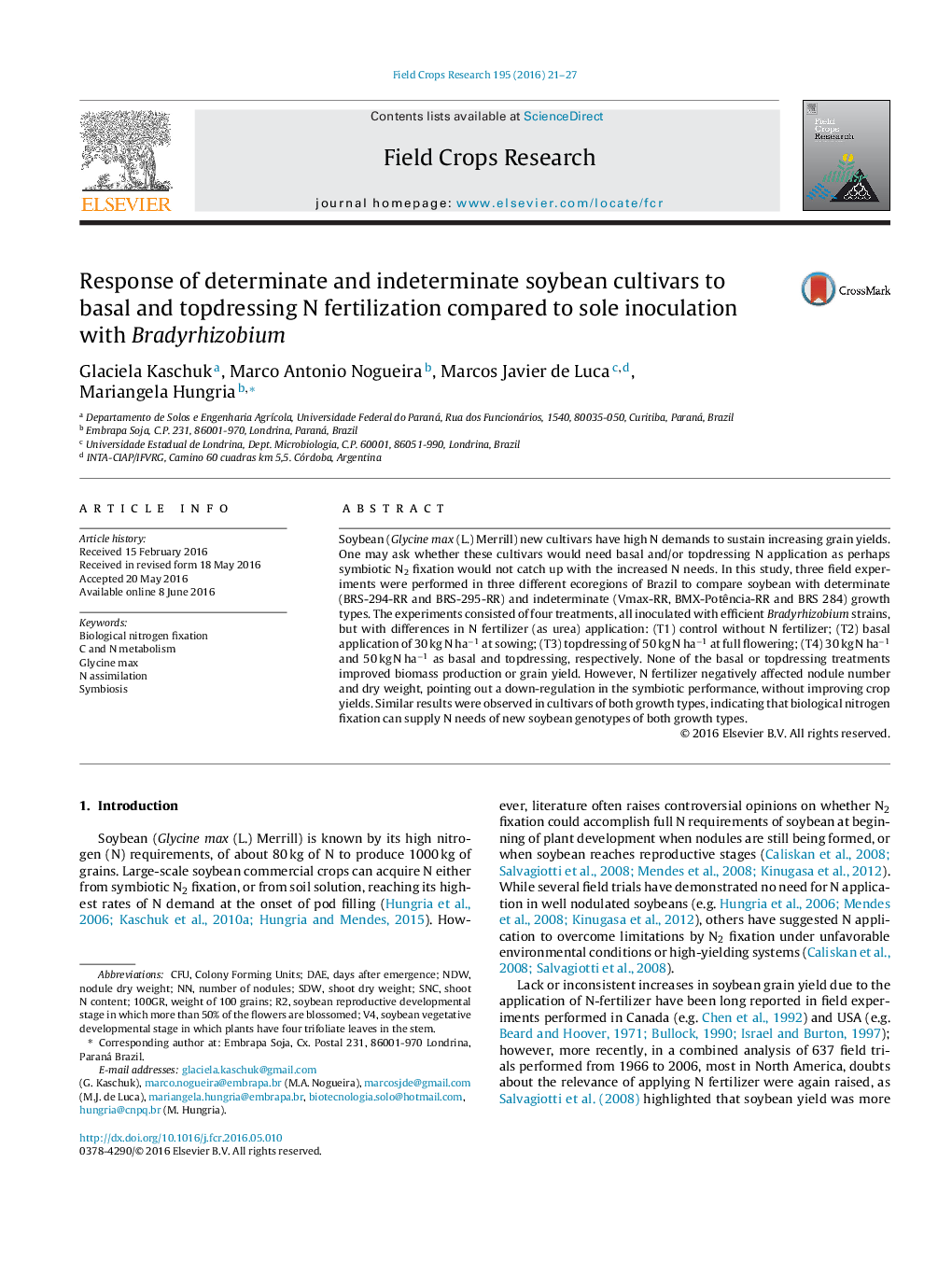| Article ID | Journal | Published Year | Pages | File Type |
|---|---|---|---|---|
| 4509818 | Field Crops Research | 2016 | 7 Pages |
•Determinate and indeterminate soybeans had similar responses to N fertilization.•N fertilizer had negative effects in nodule number and dry weight of soybeans.•Neither basal nor topdressing N fertilization improved soybean yield.•Bradyrhizobium inoculation is sufficient to supply all N needs of soybeans.
Soybean (Glycine max (L.) Merrill) new cultivars have high N demands to sustain increasing grain yields. One may ask whether these cultivars would need basal and/or topdressing N application as perhaps symbiotic N2 fixation would not catch up with the increased N needs. In this study, three field experiments were performed in three different ecoregions of Brazil to compare soybean with determinate (BRS-294-RR and BRS-295-RR) and indeterminate (Vmax-RR, BMX-Potência-RR and BRS 284) growth types. The experiments consisted of four treatments, all inoculated with efficient Bradyrhizobium strains, but with differences in N fertilizer (as urea) application: (T1) control without N fertilizer; (T2) basal application of 30 kg N ha−1 at sowing; (T3) topdressing of 50 kg N ha−1 at full flowering; (T4) 30 kg N ha−1 and 50 kg N ha−1 as basal and topdressing, respectively. None of the basal or topdressing treatments improved biomass production or grain yield. However, N fertilizer negatively affected nodule number and dry weight, pointing out a down-regulation in the symbiotic performance, without improving crop yields. Similar results were observed in cultivars of both growth types, indicating that biological nitrogen fixation can supply N needs of new soybean genotypes of both growth types.
Graphical abstractFigure optionsDownload full-size imageDownload as PowerPoint slide
